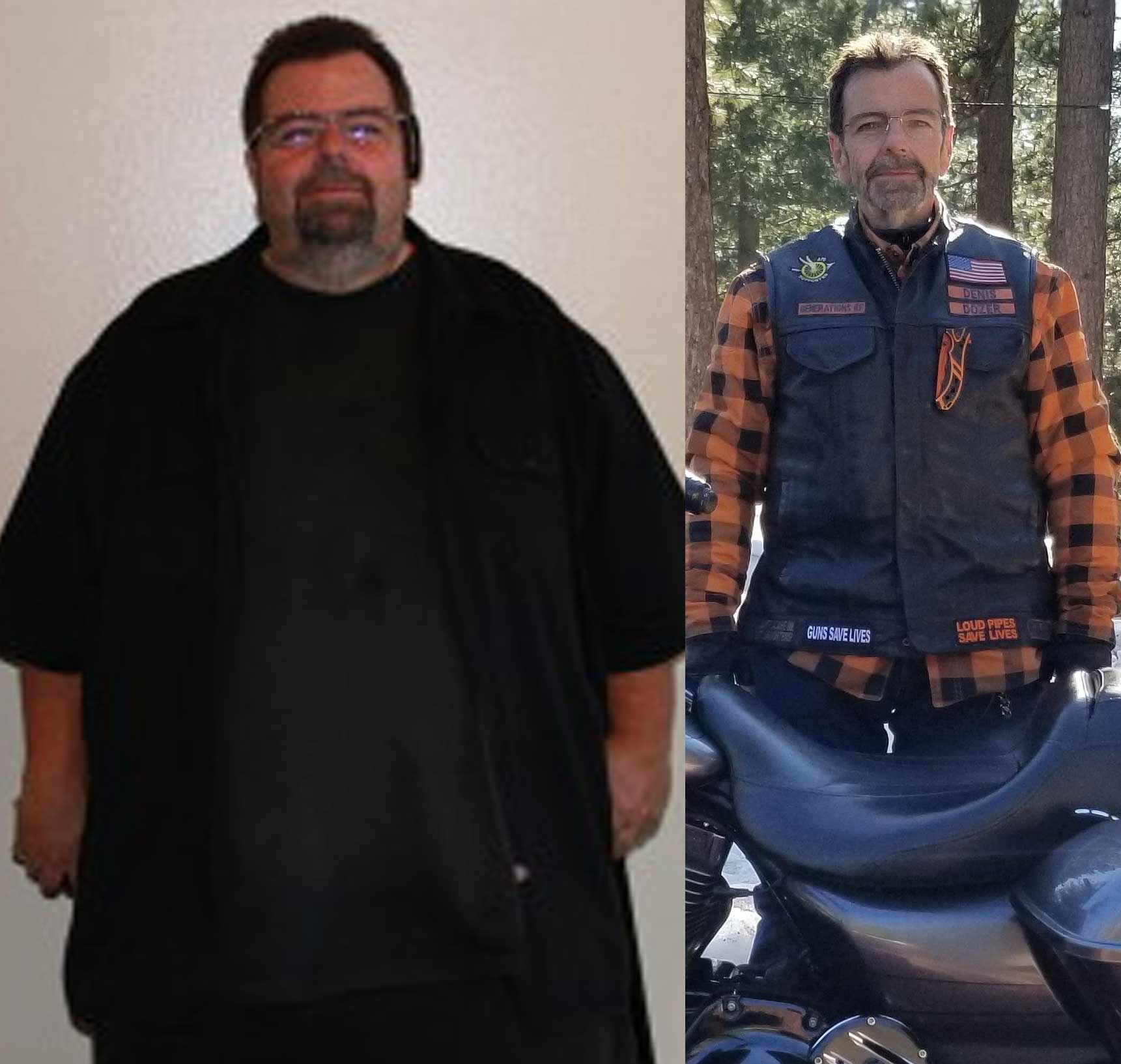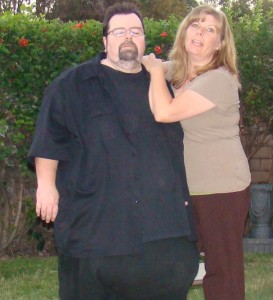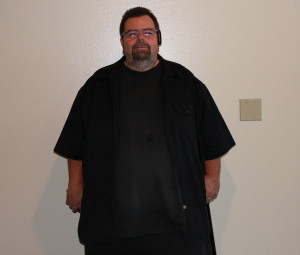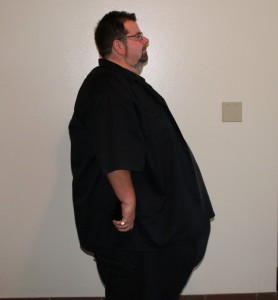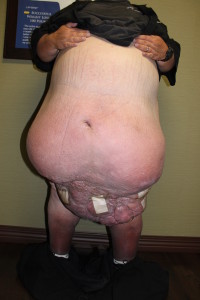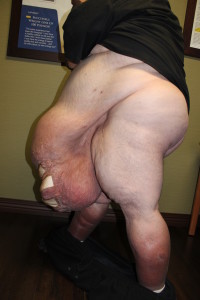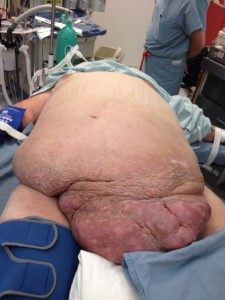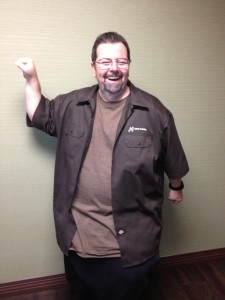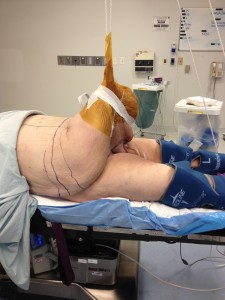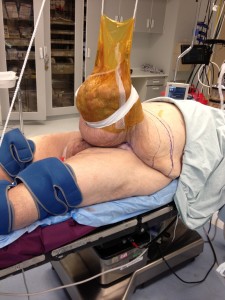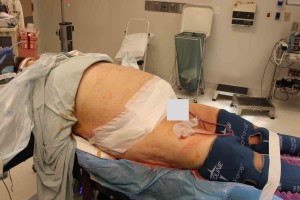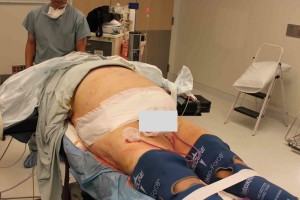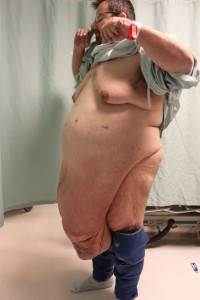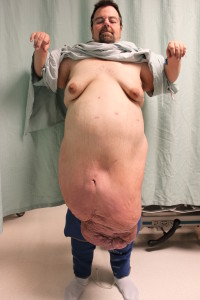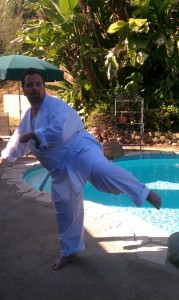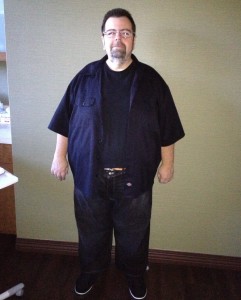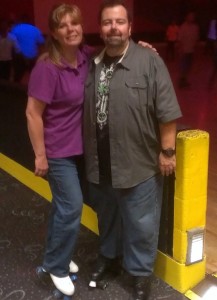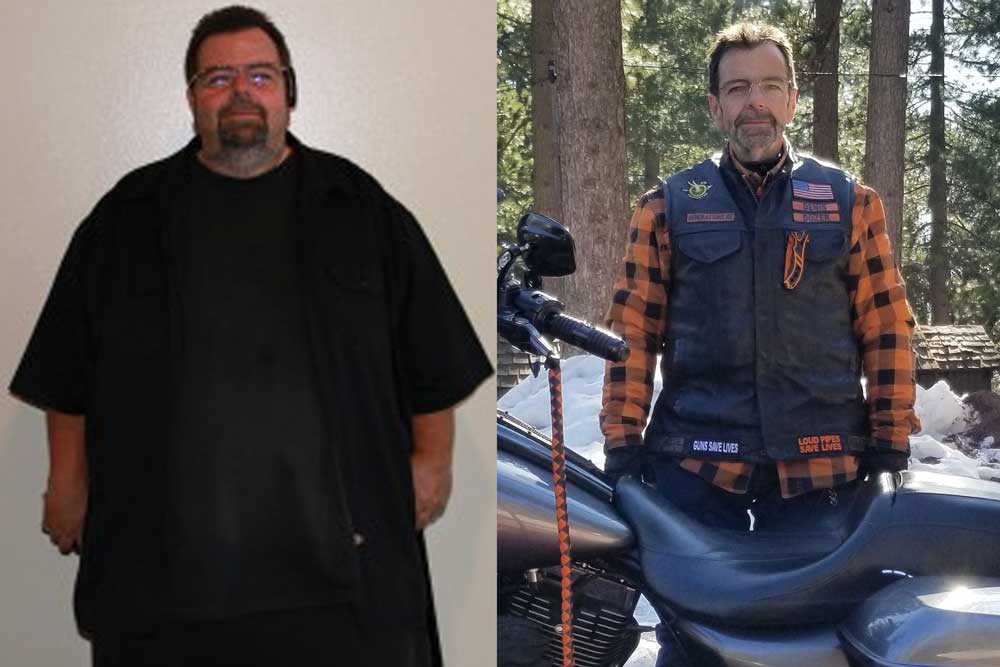Denis
Denis' incredible weight loss story
This is the story of Denis, a patient of Dr. Oliak’s whose life transformation was nothing short of miraculous. At one point, Denis weighed as much as 628 lbs, was addicted to heroin, and so ill from weight-related infections that he nearly died.
And now? He’s an entrepreneur in a loving relationship, and he has his own motorcycle group that’s raised millions of dollars for veterans.
Or, as Denis puts it, “I’ve been TEARING IT UP since Dr. Oliak saved my life.”
“As a bariatric surgeon, I’ve been fortunate to help countless people improve their lives with weight loss surgery,” says Dr. Oliak. “I’ve seen patients go from not being able to walk without pain, to running marathons. I’ve seen a patient go from being confined to a wheelchair to hang-gliding in South Africa. Every day, I see patients with more energy, more confidence, more happiness, and fewer medical problems.
“But of all the 1000's patients I’ve operated on, I’ve never seen a more moving story than Denis’s gastric bypass success story.”
How Denis’s struggles with weight began
You might wonder, how does someone get to be 628 pounds? In Denis’s case, it started when he was a long-distance truck driver who was on the road frequently. When he would stop for his federally-mandated breaks from driving, he would eat—a lot.
Then he became a dispatcher for independent drivers. “The guys would bring me an extra-large pepperoni pizza that I’d eat all by myself in half an hour. Then someone might bring me 15 of those 59-cent cheeseburgers from McDonald’s, then later we’d all go out for Baconaters at Wendy’s.”
The most interesting thing about Denis’s eating habits during this time was that he would actually avoid eating for as long as possible before giving in to his cravings.
“I would do everything in my power not to start eating, because once I started, I couldn’t stop. I was never full and never satisfied,” says Denis.
A never-ending cycle of infection and pain
After years of this lifestyle, Denis became obese. At his heaviest, he weighed 628 pounds, and had developed an extremely large apron of skin and fat that hung from his lower abdomen and extended to below his knees. This apron, known as a pannus, further limited his ability to perform basic tasks of daily living such as walking, standing, showering, dressing, sleeping, etc.
At its heaviest the pannus weighed more than 100 pounds just by itself, and it caused him continuous, severe pain.
Why was it so painful? As a pannus continues over time to hang lower and lower (due to gravity), the circulation of blood through the pannus can become compromised. This leads to swelling, which pulls the pannus lower, and further compromises circulation. Over time, permanent and progressive damage occurs in the skin and fat.
This damage causes the skin to break down, and it becomes infected. Which leads to more swelling that causes more damage. It was a vicious cycle and Denis was trapped in it—his pannus was large and heavy which limited his mobility. But the pain from the swelling and infections was constant.
A key piece of the puzzle here is that Denis did not have health insurance. This prevented him from getting adequate health care. He managed as best he could by keeping the infected areas clean and dry, and taking antibiotics when the infections worsened. But unfortunately, the infections would worsen and then improve (and then worsen again)...but never completely resolve.
And the pain was intolerable.
Denis eventually turned to illegal heroin to treat his pain. For years, he took 20-30 Norco or oxycontin tablets a day. But this was expensive for someone with no health insurance, so he eventually switched to heroin. Smoking heroin worked better for pain control and was much cheaper and easier to obtain than prescriptions for oxycontin.
“I only ever got high from smoking heroin maybe the first two times,” says Denis. “After that, it was only for pain. When I was in my 20s I used drugs frequently. But this time around it was only to help me deal with the constant pain.”
Denis’s wake-up call
Then, in 2006, Denis got the severe infection that nearly killed him.
He was treating himself with his usual regimen of antibiotics, heroin for pain, and waiting for improvement. But this time the infection spread throughout his body and he got really sick.
After his friends hadn’t seen Denis for a few days, one of them went looking for him. He found Denis in his house, lying unconscious in a pool of blood and pus—but he couldn’t get inside the house. The fire department had to tear the door off. But at 628 pounds, Denis couldn’t fit him through the door on a gurney. So they broke down a wall, and 8 firemen carried him out. The smell of death and decay was so strong the police had to take the friend aside to talk to him.
Denis almost didn’t make it through the next 24 hours. He had lost a lot of blood, was in septic shock and going through heroin withdrawal. At one point in the emergency room, he stopped breathing and had to be resuscitated by emergency room physicians.
“That day, I laid down to take a nap, thinking when I woke up I’d call my dealer for more heroin,” says Denis. “Instead, I was unconscious in the hospital for 2 weeks. I went through withdrawal without ever really knowing it, so that part wasn’t so bad. The bad part was my lungs.”
Denis needed significant pulmonary rehabilitation. He ended up being in the hospital for 4.5 months to recover. This was his wake-up call. While he was in the hospital, he lost about 200 pounds, which decreased his pain and the size of his pannus. Incredibly, Denis stayed off all narcotics. He started a business, got health insurance, and got married.
But, as Denis said, food (not heroin) was the drug he couldn’t quit.
In the years after his wake-up call, Denis’s weight crept back up. Sure, Denis’s addiction to food was a factor, but the bigger culprit was the biological “set point” for weight that the body very effectively maintains. The set point increases with weight gain and unfortunately does not come down with dieting and exercise. Anytime a person loses weight with diet and exercise, the body deploys the weapons of increased appetite and decreased metabolism to get them back to their “normal” weight.
Denis’s set point was likely to his maximum weight, which means his body wanted to get him back to 600 pounds. As he gained more and more weight, he again lost a lot of his mobility and ability to walk, stand, get dressed, sleep, etc. His skin infections became more frequent and severe, as did his pain.
Despite this, Denis stayed off pain medication and even continued to run his business.
The surgical consultation with Dr. Oliak
“I met Denis in June of 2012,” says Dr. Oliak. “He weighed 532 pounds and was in bad shape. His pannus was larger than any I had ever seen—and it was extremely heavy, severely swollen, and chronically infected. He could barely walk, could only stand for a short while, couldn’t lie on the exam table, and was in obvious pain. As he told me his story, I was amazed at how successful he had been at making the best of his dire situation.”
By the time Denis found Dr. Oliak, he’d already gone to 9 different bariatric surgeons. “Most of them weren’t interested in my case, especially once they saw my abdomen. Several of them were blunt about not wanting to take the risk. I was starting to think nobody could really help me,” says Denis.
“My initial thought for Denis was that the best approach would be to first remove his pannus, followed by gastric bypass surgery later on,” says Dr. Oliak. “Denis loved this plan because his pannus was the most limiting issue. It caused him severe pain and impeded his mobility. I got excited thinking about how drastically his life would improve, and Denis became almost manic with excitement and anticipation.”
Dr. Oliak had performed many panniculectomies over the years, but nobody had anything nearly as severe as Denis’s problem. After looking up the published medical literature and speaking with a colleague, my excitement for the treatment plan I’d proposed for Denis waned. Everything I’d learned indicated that the complication and mortality rates for panniculectomy patients like Denis was very high.
“I realized the safer approach would be to perform the gastric bypass first, then let Denis lose weight before doing the panniculectomy after it had shrunken,” says Dr. Oliak. “But it would need to be done laparoscopically, because a large abdominal incision would almost certainly result in complications. This meant Denis would need to lose weight before the surgery.
“I knew this news wouldn’t go over well. Denis had left our first visit feeling ecstatic because the solution to his problem was within reach. Now I had to tell him the road would be longer, and harder.”
As expected, Denis didn’t take this news well.
“I had a date for the pannus surgery. I was in heaven,” says Denis. “When Dr. Oliak had to change the plan, I got angry. I was crying and screaming. I destroyed half my house because I was so upset.
“I had the solution in my hand and they took it away.”
Denis wanted to give up, and he tried to. Luckily his amazingly supportive family convinced him otherwise, and he accepted the new plan. He went on a liquid diet and lost 80 pounds in 6 weeks.
Pre-op clearance for Denis involved a CT scan and a consultation with a cardiologist. “I had trouble scheduling the CT because I couldn’t fit in most of the machines locally. Chapman Hospital was able to get it done, and it was still a tight fit.
“My meeting with the cardiologist was funny. He came in saying, ‘I have to meet the guy who’s 629 pounds with the heart of a 30 year-old runner.’ Somehow I’ve never had high blood pressure or cholesterol, even though I had been eating all of those cheeseburgers. No diabetes either,” says Denis.
Dr. Oliak scheduled his bypass surgery for October 1, 2012.
Gastric Bypass Surgery
“I was a little nervous about performing Denis’s gastric bypass surgery,” says Dr. Oliak. “Would the pannus get in the way? Would the weight of the pannus on his legs cause a blood clot? It was hard to know because cases like Denis’s are rare.
“As it turns out, all of his preoperative weight loss made his gastric bypass surgery rather straightforward. He went home two days after surgery and recovered without incident.”
Like all weight loss surgery patients, Denis began to lose weight rapidly after surgery.
To everyone’s surprise, Denis’s pannus became more of a problem after he lost weight from surgery. His weight loss made the pannus hang even lower, which made wearing clothes more difficult. But the real problem was that the pannus swung even more when he walked, which threw him off-balance.
Dr. Oliak wanted to wait to perform the panniculectomy for more weight loss, more shrinkage, and less risk. But Denis couldn’t wait any longer. So the panniculectomy was scheduled for December 12, 2012.
Massive Panniculectomy
The panniculectomy was a much more difficult operation than the gastric bypass. Dr. Oliak and his team had to use hooks, ropes, and pulleys to keep the pannus in the right position for surgery. But it was so heavy, it was hard to maintain exposure of the surgical field. The operation had to proceed slowly to prevent excessive bleeding from the countless large blood vessels that supplied the pannus.
The operation took more than 5 hours. Dr. Oliak removed a remarkable 52 pounds of skin and fat. Denis had 150 staples across 3.5 feet of his abdomen.
“Immediately after surgery, Denis felt great. He went home the next day,” says Dr. Oliak. “I think it took me longer to recover than him.”
Denis did feel great when he woke up. In pain, but great. “I looked down and saw my toes. I hadn’t seen them in however many years. I saw someone I also hadn’t seen in a long time but was very glad to see,” says Denis, laughing.
Denis’s biggest challenge might surprise you: walking.
“Before the surgery, if I wanted to stand up, I would have to swing my abdomen out of the way. That takes a lot of force, to swing a 110 pound abdomen in the air while getting your legs behind you,” says Denis. “The day after the surgery when I tried to stand up I immediately fell back down on the bed because I was trying to swing a pannus that wasn’t there anymore. I was laughing like crazy. It was so strange to be carrying that weight for so long and then suddenly not be.”
Denis couldn’t walk backwards for a good year. Someone would have to hold him or touch him so he wouldn’t lose his balance. He started practicing karate and his sensei worked with him one-on-one to help him regain his balance.
Life after surgery
Eight years later, Denis now weighs about 165 pounds. He says he is “extremely happy” with his “perfect lady.” He practices karate, roller skates, and rides his motorcycle with his group all the time.
Most of all, he wants everyone to understand how Dr. Oliak did more than save his life.
How?
Denis is in the business of OSHA compliance and safety training. He’s designed hundreds of custom safety programs that helps clients all over the United States follow state and federal guidelines specific to their industry.
One of the most common safety trainings Denis does is CPR and First Aid.
“I’ve trained thousands of people to do CPR and First Aid, as part of my job and as a part of the motorcycle community,” says Denis. “The people I’ve trained have gone on to train thousands of people, every year. One time a woman came up to me and said, ‘Denis, thank you, my granddaughter was choking, but because you taught me the Heimlich maneuver I was able to save her life.’ I’ve heard dozens and dozens of stories about people’s lives being saved as a result of my training.”
“By saving my life, Dr. Oliak has saved so many people. I’d have to bring a hundred people with me to an office visit to show him the impact he’s had. I’m so grateful he gave me the opportunity to take care of so many other people.”

